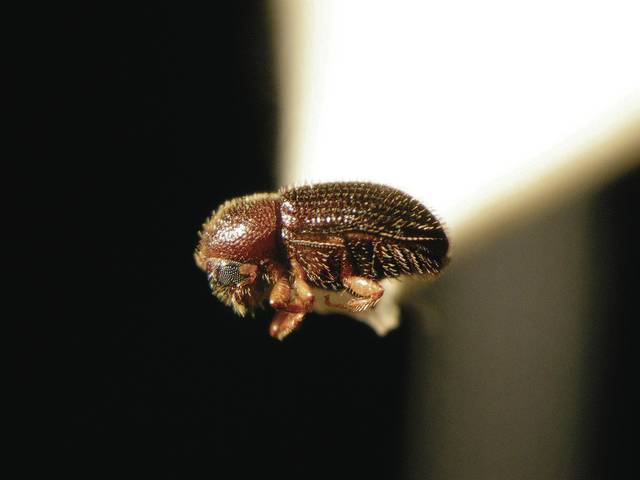The approval of a new statewide interagency biosecurity plan earlier this year appeared to be a turning point for Hawaii in terms of addressing funding for invasive species management, as well as preventing for new species arrivals. ADVERTISING The approval
The approval of a new statewide interagency biosecurity plan earlier this year appeared to be a turning point for Hawaii in terms of addressing funding for invasive species management, as well as preventing for new species arrivals.
The plan provided 147 action items to be implemented over a 10-year period.
Many of the items required action at the legislative level. As this year’s session wraps up, results are mixed.
“Increasing our biosecurity is really important, but it doesn’t look like there’s a lot of investment in it from the state Legislature,” said Hawaii Invasive Species Council program director Joshua Atwood. “We can identify the solutions, but if we don’t invest the resources for border biosecurity or rapid response, we’re not going to succeed.”
The biggest legislative success this year was the approval of House Bill 1325, called the Clift Tsuji Act after the late Hawaii Island representative. HB 1325 appropriates $1.2 million from the state agricultural development and food security special fund to be allocated as follows:
• $200,000 for import replacement of high-risk crops.
• $500,000 for enhancing pest management practices.
• $100,000 for developing quarantine treatment options.
• $100,000 for development and implementation of diagnostics to “quickly and reliably identify new and evolving pests and diseases.”
• $200,000 for improving inspection capacity in the Department of Agriculture Plant Quarantine Branch.
• $100,000 for public and agriculture industry education.
Two other measures received funding: a program to control rose-ringed parakeets on Kauai, and an extension of a farmer subsidy program for treatment of coffee berry borer. Another measure, introduced by Hawaii Island representative Nicole Lowen, authorizes county employees to access private property in order to manage invasive species.
But other measures, such as a creating a dedicated rapid response fund within the Department of Land and Natural Resources and funding ongoing efforts to fight rat lungworm disease and little fire ants, did not pass conferencing. Funding efforts for rapid ohia death died earlier in session.
Each year seems to bring “a new problem that is urgent,” said James Leary of the University of Hawaii at Manoa College of Tropical Agriculture and Human Resources. “And we’re operating on a budget that cannot sustain all of the species that are priority.”
One bill that came close to passing conferencing was a reorganization of HISC to create the Hawaii Invasive Species Authority. HISC is an interagency group comprised of members of different state organizations like the DOA and DLNR. HISA would have had its own dedicated staff and a larger grants program.
The measure was one of the 147 actions in the biosecurity plan, but it too did not make it out of conferencing.
HISC will maintain the same level of funding as it has for the past three years, Atwood said.
“It’s great that we’re maintaining our funding, but it’s about half of what we asked for,” Atwood said.
An HISC report to the Legislature at the start of session noted that the group receives about $10 million in project requests each year. It has a budget of $4.74 million.
Email Ivy Ashe at iashe@hawaiitribune-herald.com.



